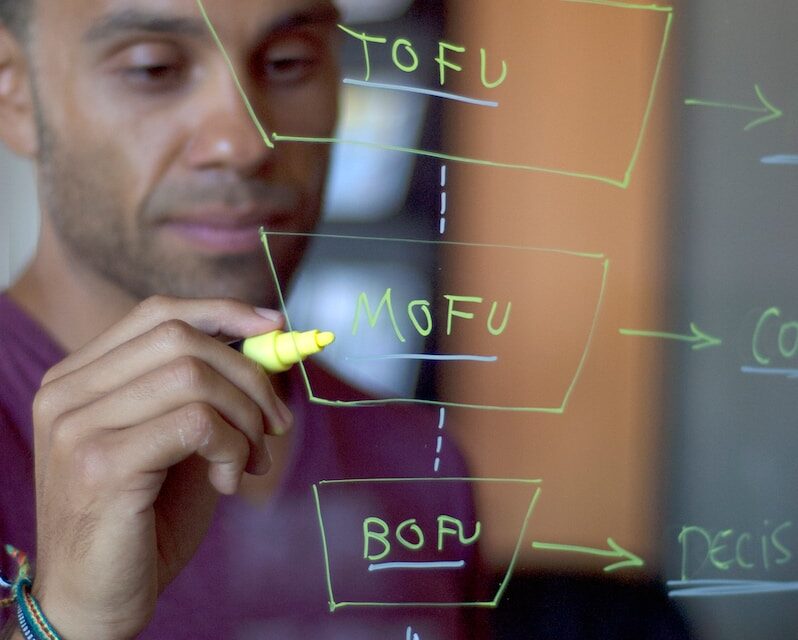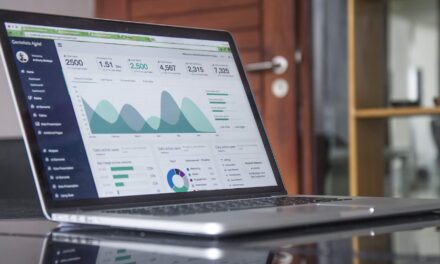As the world of sales and marketing changes and evolves with the times, creating a comprehensive B2B strategy that extends beyond prospecting is essential for sustainable business growth and success. Sales 2.0 expert Richard Lane, co-founder and CCO of durhamlane, a strategic sales and marketing agency behind global B2B brands, has witnessed a significant transformation in the sales funnel.
He believes that the traditional linear path has evolved into a dynamic loop. Thanks to the shifts in people’s buying habits, today’s buyer journey has become crowded with more entrance and exit points than ever. In this article, Richard shares how to master the art of building all-encompassing sales strategies across every stage of the funnel, from prospecting and qualification to acceleration and closing.
A well-defined sales funnel
Due to the shift of modern buying patterns, escalated by online sales and digital shopping, the B2B sales funnel no longer has a clear beginning and end. As well as customers becoming involved and engaged at not only different stages, different times and at different speeds, there is also a huge variety of channels that are now in the mix. This can make what was once a logical and linear funnel extremely complicated.
Having a well-defined sales funnel, and understanding the complexity of it, gives you the time and awareness to identify potential bottlenecks and optimise your strategies accordingly. A clear understanding of the sales funnel allows businesses to allocate resources effectively and focus on the most critical areas of the customer journey.
With so many variations, one important thing to consider is: where is the end of the funnel? Here’s your answer: it’s where a prospect becomes a customer. This is when the funnel starts again in the other direction, where the focus shifts to nurturing and growing that relationship indefinitely. Customer retention and expansion become the new focus, meaning you must provide exceptional customer support and work to identify opportunities for upselling and cross-selling. This keeps the funnel in a continuous loop, maximising customer lifetime value and driving sustainable growth.
To do this, you need to implement strategies to foster growth and identify those upselling or cross-selling opportunities. The crucial point is to make sure your team is mobilised to play the right strategic roles at various points along this funnel.
Selling at a Higher Level
Maintaining a perpetual sales funnel means engaging with a broader spectrum of individuals than ever before. To excel as a distinguished sales professional, it is crucial to refine your approach, effectively engaging prospective clients at every stage.
You need to build a plan that ensures people from different parts of an organisation, starting at C-level, are involved and engaged. This extends to using your own C-level executives and means leveraging data, personalisation, and targeted messaging to connect with prospects on their terms.
I have coined the term Selling at a Higher Level to encapsulate the practice of engaging individuals across all tiers of an organisation. This approach involves tailoring your offerings to specifically address unique needs, thereby adding significant value and cultivating trust. Central to this concept is the implementation of a customer-centric methodology, which employs consultative questioning techniques. Engaging prospects and clients through thought-provoking inquiries aids in uncovering their pain points, aspirations, and desired outcomes.
Ultimately, it boils down to the crucial practice of genuinely listening and comprehending their perspective to discern their true requirements. Whether you are positioned within sales or marketing, prioritising the customer’s interests is paramount.
Selling at a Higher Level can be adopted across an entire sales team or as an individual contributor, serving as a constant reminder to perpetuate the momentum of business development and prospecting. It also facilitates a more efficient allocation of your time, as it ensures that discussions are consistently qualified and progress is monitored in your deals. In essence, this approach provides a structured sales funnel loop to guide and streamline your efforts.
How to build a sales strategy for prospecting, accelerating, and closing
Creating a sales strategy that involves and engages people across all tiers of an organisation is crucial for success. To be the person that organises, manoeuvres, and ensures everyone is playing the right strategic role on both sides, Selling at a Higher Level introduces a customer-centric consultative question-based methodology.
In our experience, it’s really helped a sales individual or a whole sales team to manage their process. You can use Selling at a Higher Level to remind you to keep the wheel of business development turning. It can also help make sure you spend your time where you can be most successful, because you’re going to be qualifying discussions and making sure that your deals are moving forward. It provides you with a funnel, and as a team, it provides you with a common language, which is really important.
So how do we develop consistency? We speak the same language, and we work the same way to the same velocity. It supports that sort of thinking because it is consultative in nature, an umbrella approach that allows you to start thinking of your effort and your customers in certain places. You will have deals at different stages, and it helps remind you to do certain things at certain points.
Why the sales funnel never ends
Contrary to popular belief, the sales funnel never truly ends. Even after a successful sale, businesses must focus on customer retention and advocacy. By nurturing existing customers and providing exceptional support throughout their experience with the business, it’s possible to foster long-term relationships and increase customer lifetime value.
Tracking key metrics is essential to assess the effectiveness of your sales funnel and identify areas for improvement. Here are some key metrics to consider:
- Conversion rate: Measure the percentage of leads that successfully convert into paying customers at each stage of the sales funnel.
- Customer acquisition cost (CAC): Calculate the cost incurred to acquire a new customer, including marketing and sales expenses.
- Customer lifetime value (CLTV): Determine the average revenue generated by a customer throughout their relationship with your business.
- Churn rate: Track the percentage of customers who stop using your product or service over a given period.
- Return on investment (ROI): Evaluate the profitability of your sales and marketing efforts by comparing the revenue generated to the costs incurred.
What’s the secret to the endless sales funnel loop?
To execute a comprehensive sales strategy successfully, and to effectively navigate the sales funnel loop, collaboration and role alignment are crucial. It is crucial for sales and marketing experts to work together, coordinating efforts across all stages of the funnel.
It is a common misconception that sales and marketing exist as separate entities, when in reality, they ought to draw inspiration from each other’s practices. Each team member must assume their designated strategic role and actively collaborate within those roles.
Practicing patience, having a customer-first philosophy and truly prioritising collaboration to align sales and marketing are all major components to driving business growth, increasing revenue and delivering a better buyer experience. By clarifying clear responsibilities, sharing valuable insights, and fostering effective communication, teams can optimise their performance levels and forge a cohesive customer journey.
The achievement of success within the sales funnel necessitates not only the proficient management of internal roles but also the cultivation of strategic alignment with customers. It is paramount to delve into the objectives, challenges, and aspirations of both sides of the sales equation. By aligning your strategy with the specific needs and goals of your customers, you can tailor your offerings and approach to provide optimal value. The development of a customer-centric strategy establishes trust, fortifies relationships, and augments the likelihood of achieving successful outcomes.
In summary…
Creating a winning strategy for all parts of the sales funnel requires the ability to reach beyond the traditional client contact and involve C-level executives and other decision-makers in the process.
By understanding their goals, challenges, and vision, sales professionals can align their offerings and value propositions accordingly. This involvement builds strong relationships, ensures buy-in from all stakeholders, and increases the chances of revenue success.
Richard Lane, CCO and co-founder of durhamlane, is a seasoned Sales 2.0 practitioner and consultant with over 16 years of experience in solution selling, global sales, and sales leadership, specializing in accelerating revenue generation. He developed the 'Selling at a Higher Level' methodology, aiding numerous global businesses in boosting their sales. Lane possesses expertise in omnichannel marketing and performance culture, having collaborated with notable brands like Siemens Healthineers, ABB, and Nasdaq. A regular speaker and podcast co-host, he is dedicated to developing sales professionals and also serves as an Associate Lecturer at Anglia Ruskin University.







